Soil health, plant feed & pruning fruit.
I know I have looked at soil and plant feeds a number of times over the years but, for the benefit of new growers, I think it may be helpful to cover it again today as we prepare our gardens for a new season.
As you can probably imagine, we receive quite a few images of plants suffering from pests or disease in the hope that we can provide help or advice (which we are always delighted to do). The most common problem are undernourished plants that simply aren't getting the nutrients they need to grow well. Crops growing in low nutrient soil can be affected directly and show poor, stunted growth or indirectly because weak plants are more prone to attack by pests or disease.
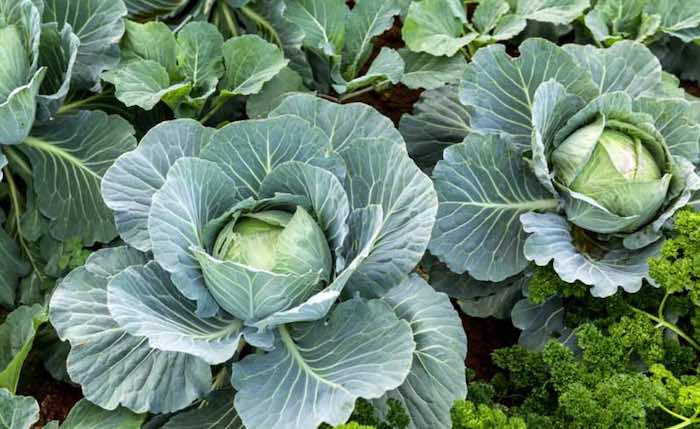
We need to understand that plants are just like us, they need a good diet to stay healthy and will not give the expected results if they don't have enough feed or have a feed that doesn't contain all the nutrients they need. As plants go, vegetables are very hungry crops (far more demanding than flowering plants) and need plenty of nutrients to fuel the fast growth we require in a single growing season.
If we stop to consider the size of a large head of cabbage (taking up nearly a square metre of soil) or a tomato plant producing 50 or 60 ripe tomatoes we can see that all that growth needs to come from somewhere, a low nutrient soil or compost simply can't support that level of growth.
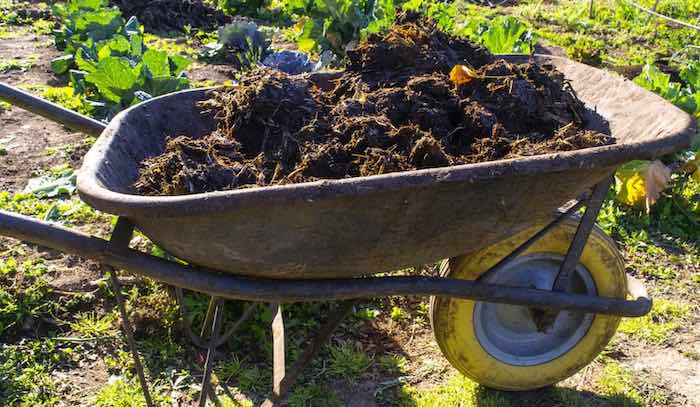
Processed food
Plants need a mix of core nutrients to grow, the most important major elements are Nitrogen, Phosphorous and Potassium (the N:P:K you see on fertiliser packets) but there are also a list of minor or macro nutrients which play a part, more or less so depending on what you want to grow. All these elements occur naturally in rotted organic material like manure or compost but they are also available in a much more concentrated form in processed man made fertilisers.
The science behind the organic growing mantra, 'Feed your soil, not your plants' is that it is better to add raw organic material (and by organic, I mean anything that was once alive and can rot down to release its nutrients) to your soil and allow the organisms in your soil to process it into its key elements. There are list of advantages as long as your arm but the big one is that your garden becomes more fertile every year whereas, if you use chemical fertilisers only, it will become progressively less fertile.
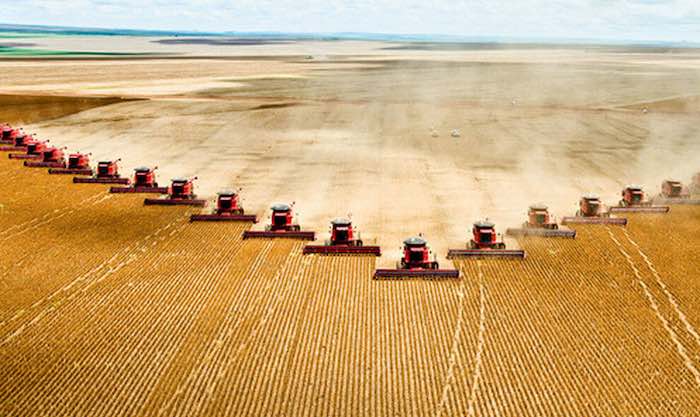
This fact is one of the conundrums we have to deal with in modern intensive agriculture which is increasingly dependent on chemical fertilizers as farm land is degraded over time (by using them) but that is a topic for another day. It may be the case that completely replacing the use of chemical fertilisers with organic agriculture isn't a viable option as a global farming solution but organic and sustainable growing at home will make your little part of the world more fertile and more bio diverse.
The reason that supplying key NPK nutrients indirectly using bulky organic material is better than adding chemical fertilisers directly is that organic material doesn't only feed your plants. Rotted compost or manure is worked into the soil by earthworms and other soil life to make it more free draining, better able to hold moisture in dry periods and reduces compaction making it easier for plant roots to spread and draw up nutrients.
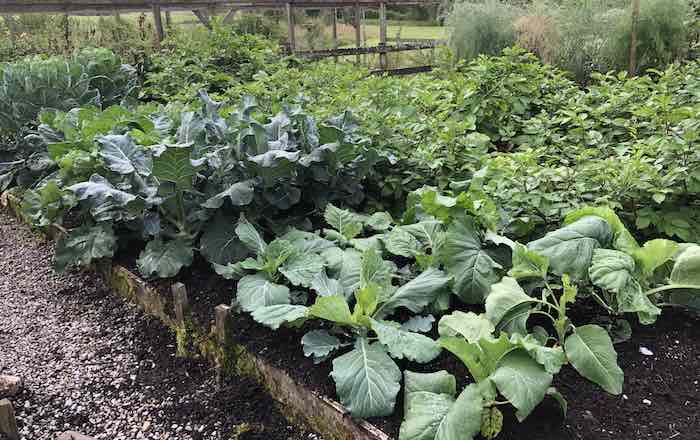
Another advantage of using bulky material is that it takes time to break down so is a naturally slow release fertiliser. We mentioned that man made feeds are processed but organic feeds also need to be refined before the key elements are released; the difference with organic growing is that the organisms in your soil (from microscopic bacteria up to earthworms) does the processing work for you which results in a slow, drip feed of nutrients. Bulky manure or compost therefore needs only to be added to the garden once a year (provided it is in sufficient quantities) and will slowly release it's nutrients over the growing season.
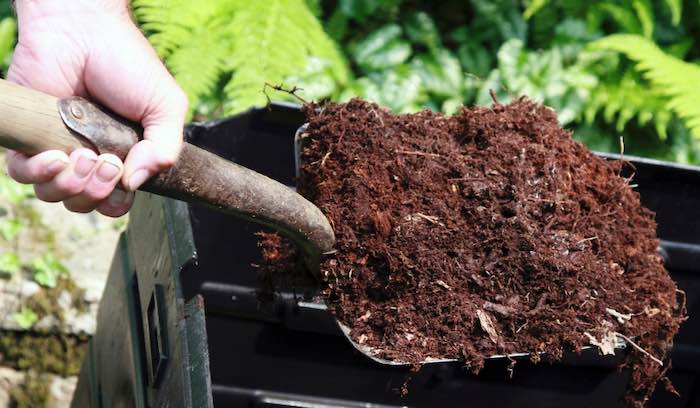
Sourcing manure and compost
I am very aware that not everyone can get their hands on enough organic material to feed a hungry vegetable garden so we may need to make some compromises but in the round, the concept of feeding the soil should apply.
The first key discipline to master is making your own compost both from garden and kitchen waste as this material is a very valuable source on nutrients. Unfortunately, unless we bring in a lot of material from outside the garden, there will never be enough (partly because we don't generally compost our own waste so nutrients from the food we eat don't make it back to the garden) but good homemade kitchen and garden compost is a superb plant feed.
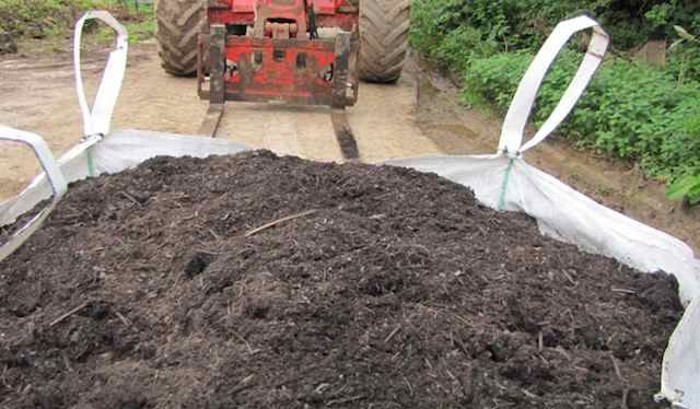
If you need to supplement your home produced compost (and you almost inevitably will), you can buy in commercially produced or 'municipal' compost which won't be quite as high in nutrients as homemade but is still a very good base. My advice is to look at it closely to check the percentage of woody material (it will always have some) as the lignin in wood needs nitrogen to break down so will borrow it from your soil (temporarily making it less rather than more fertile). If you do see high woody content it may need to be composted more or can be spread on the surface of the soil but should not be dug in.
In my experience, municipal compost is a very good long term soil addition but it is relatively low in nitrogen and can take a long time to release it. For that reason I would always supplement with a good source of slow release nitrogen; organic poultry manure (or even better, seaweed and poultry manure) is about ideal.
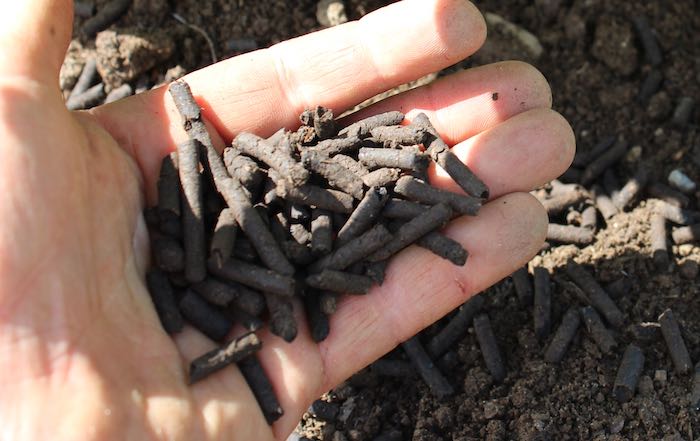
Liquid V's granular or bulky feeds
In general granular or bulky feeds like seaweed, manure or compost take longer to have an effect as they need to break down in the soil first. Liquid feeds, on the other hand, are readily available to your plants and will have an immediate effect.
It is a good idea to apply bulky organic feeds at least once a year to improve the long term health of your soil. If treating a specific issue or to give a plant a boost it will be more beneficial to use a liquid. Remember a liquid doesn't build the soil so they should always be used as an addition to your broader soil feeding regime.
The exceptions to this rule are container grown plants. They will always need direct feeding because of the limited root space available to them and the fact that they are growing in a simple growing medium like peat. Peat, coconut fiber or peat free compost has very low nutrient levels so your plants won't thrive in the long term without a supplementary feed.
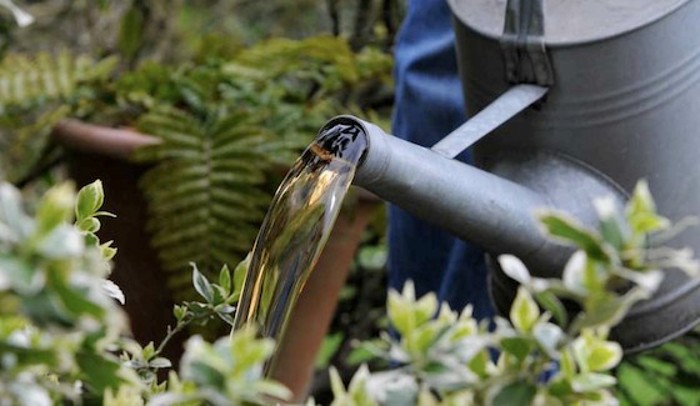
NPK
It is a good idea to start with a home soil test which will show the levels of the major nutrients Nitrogen (N) Phosphorous (P) and Potassium (K). There are also a range of micro nutrients but you will need to get a professional test for these to show up. Any micro nutrient deficiencies will be visible in your plants with symptoms like yellowing between leaf veins (magnesium deficiency) or brown curds on cauliflower (boron deficiency) but most good garden soils will have sufficient quantities.
Plants need nitrogen for leaf growth, phosphorus for root growth, and potassium for fruit growth. All plants need all three, but leafy crops particularly need nitrogen, and fruit crops won't develop well without enough potassium. When you look at a bag of fertilizer you will see the NPK values displayed as 3 numbers as shown below.
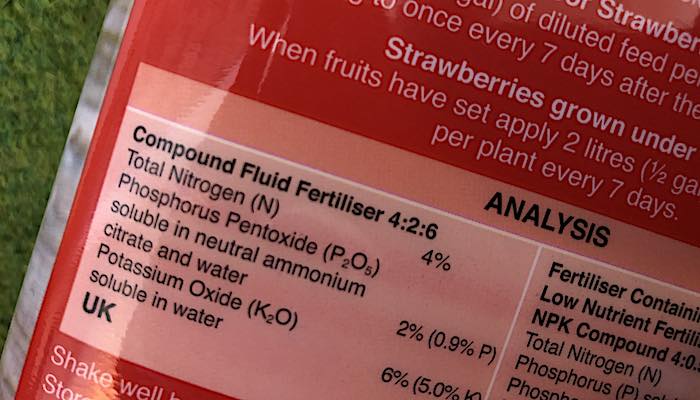
The example is a bottle of organic strawberry feed I picked off the shelf in the storeroom. The NPK ratios are displayed as 4:2:6 meaning the feed contains 4 nitrogen (N) for foliage, 2 phosphorous (P) for roots and a higher 6 potassium (K) to support the strawberry fruit. It is higher in potassium because it is a fruiting plant feed. A tomato plant feed will have a similar ratio meaning a tomato feed will work just as well for strawberries and vice versa; they are just specifically labelled to assist you in buying more fertiliser...
Cabbage, broccoli, chard and other leafy crops, on the other hand, will benefit from a higher nitrogen feed because nitrogen is needed for green, leafy growth. Feeds high in nitrogen should be avoided on fruiting plants because they will grow lots of leaf at the expense of the fruit.
When looking for the correct feed ask yourself what part of the plant are you interested in? The leaf (spinach), the root (carrot) or the fruit (tomato)? Once you know nitrogen is for leaf growth, phosphorus is for roots and potassium for is fruit you can easily make the right choice.
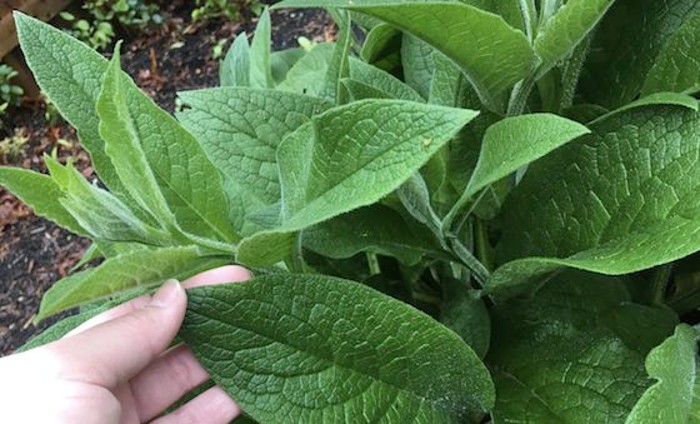
Organic V's Chemical
The major NPK nutrients are in a refined, soluble form in chemical fertilizers which means they don't benefit the soil and are more easily washed through into the ground water. As we said earlier, NPK is also present in organic fertilizers but they tend to be in a slower release form, usually with some extra bulk which feeds the soil life as well as your plants.
Also, because chemical fertilisers are so soluble, they will have a very immediate effect on your plants. You will notice this in organic vs non organic composts if you are growing seedling plants. The plants produced in the non organic version usually out perform the organic in the early stages as the plants benefit from the quick nutrient hit. In the long run the organic compost tends to catch up and produce stronger plants as they have grown at a more sustainable rate.

I am not saying you shouldn't use artificial fertilizers, I use them myself from time to time if a plant needs a quick boost but I would advise keeping them to a minimum for all the reasons above.
Use the minimum amount of feed possible
With a direct feed, whether artificial or organic, you should use as little as you can. It does not follow that if some is good then more will be better as plants can only use a certain level of nutrients. The excess will be wasted or, worse, run off into water courses and cause algae growth and problems down the line.
With solid or granular plant feeds like seaweed and poultry manure pellets or blood, fish and bone, the application rate will very depending on what you are growing but it will be between 100 and 250g per square metre. Hungry plants like tomatoes, Brussels sprouts or cabbage will need more, between 200 and 250g while less demanding crops like onion or lettuce will need 100 to 150g.

Finally, I want to mention plant spacing as this is another reason for undernourished plants even if your soil is fertile. In general, the more space a vegetable has to spread its roots, the larger it will grow (within reason); if you want to grow an enormous onion, just plant your sets or sow your seeds at very wide spacings. The opposite is also true, plants that have been set too close together will compete with each other for nutrients and will grow stunted and sickly as a result. When sowing or planting, always stick to the recommended spacings, it will make a huge difference.
OK, I hope some of that was helpful for new growers. There is a lot more I could write about specific plant feeds and how they work which I might cover later in the year. If anyone has a specific question please let me know and I will try to help.

Pruning soft fruit bushes
Early March is probably the best time to prune fruit trees and bushes because the plants are just about to come out of dormancy so any cuts you make will be quickly healed. There has been plenty written about pruning which can put people off because it seems complicated. All I would say is that fruit bushes like currants or gooseberries will yield much better if regularly pruned as currants produce the best fruit on 1-2yr old wood while gooseberries grow the heaviest crops on 2-3 year old wood. Basically, the older the branch (not the bush) gets, the lower the yield.
Maintenance can be broken down into major and minor pruning with the major work making 80% of the difference so I don't bother with the rest. The foolproof method I use is to remove approx. 1/3 of the bush every year by pruning out the oldest branches. If this practice is followed every year, there should never be any branches (usually referred to as 'wood') over 3 years old on the bush. I use the same method for currants and gooseberries as illustrated in the video below on Gooseberries.
Pruning raspberries
I find it handier to prune raspberries in the Autumn as you can see what you're doing more easily but if not done (ahem, mine weren't), you should do them now. For summer fruiting varieties, you need to remove any of the canes that bore fruit last year and leave any new canes that grew last season. Summer raspberries only fruit on 2 year old canes (so the new ones produced last year) so be careful which ones you remove; the spent canes look visibly older and you can see the remains of the fruit spurs.
ARS Pruning tools
I am a bit of a tool nut and love a good quality item about as much as I dislike poor ones so I am quite excited (aren't I always?) about our new range of ARS Japanese pruning tools. While the Swiss made 'Felco' range have been the most popular quality brand for many years it seems Japanese cutting tools are now starting to 'edge' ahead. I came across the ARS range at a trade fair last year and was very impressed with the quality of the products and, crucially the sharpness of the blades, these tools really are top drawer.
I guess it's obvious really but secateurs and other pruning tools are all about the quality of the blade. A really sharp blade gives a clean cut which is better for the plant but also much easier on your hands and wrists.

ARS saws, clippers, and shears are professional grade tools manufactured in Sakai, Japan. The company have been in business since 1876 and produce blades based on 600 years of traditional technology and modern manufacturing methods. The secret to their superior performance lies in steel quality, design, thermal treatment, grinding & hardening. ARS have developed their own specialised manufacturing techniques that are unique to their range and really do make a difference.
Telescopic 2m or 3m reach pruners
One of the products I was particularly impressed with was the telescopic pruner which we supply with a maximum reach or 2 or 3 metres. This tool is essentially a pair of secateurs on a long pole which can cut through a diameter of 2cm so great for removing small nuisance branches or pruning climbing roses without using a ladder.

Professional hedge shears
Another very impressive tool from ARS is Pro Hedge Shears which are extremely light to handle (the handles are aluminium) yet are very strong and, again, incredibly sharp. If you have cut a hedge of any size by hand you will know that, after a while, the shears become very heavy so light and sharp is what you want. This is not just my opinion either, this ARS shears was voted by the UK Telegraph gardening section as 'the best hand shears for hedge trimming'.
The tester comments were as follows:
'They are light, very strong, very precise, easy to use and good for accurate cutting over long periods. Ideal for trimming large areas of yew, as they were light and it was easy to move around the hedge. A dream to cut with'.These are professional tools which, I will admit, are at professional prices but they are absolutely superb. All blades in the ARS range are removable and can be re-sharpened if required.

Heavy Duty Fruit Cages
While we are on the subject of fruit, I might as well try and interest you in our galvanized steel fruit cages to keep the birds off your crops. I'm not just making this up because we sell fruit cages but it really is almost pointless growing any red fruit like raspberries, strawberries or red currants if you don't use protective netting as the birds will leave very little for you.
I find in my garden (I have some fruit under a cage and some older stock outside) that the birds go for the red fruit first and will then start experimenting with other things once they run out. Gooseberries and white currants are usually safe but the gooseberries can be cleared out in a couple of days when fully ripe and word gets around. Blackcurrants are not as popular as red with birds and Autumn fruiting raspberry 'All Gold' seem to be ignored completely.

Our cages
Our cages are made from 33.7mm galvanised steel tubing, galvanised connector fittings and stainless steel grub screws to lock the tubes in place. We supply 4 kit sizes.
OK, that's it for today, I hope some of the above was helpful and relevant in your garden. Next week we will be looking at potatoes as it is nearly time to get our earlies in the ground and will also take a look at pest control to ensure our new crops make it to maturity and to the kitchen table.
See you all next week!


